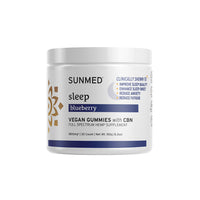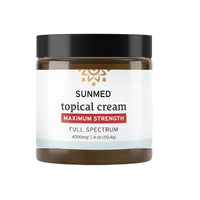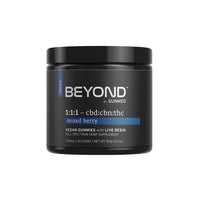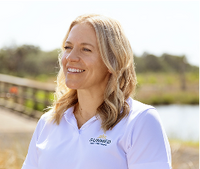RSO Full Spectrum: Examining the Facts
RSO full spectrum oil offers a potent blend of cannabinoids and plant compounds for holistic wellness. Learn what it is and how it works.
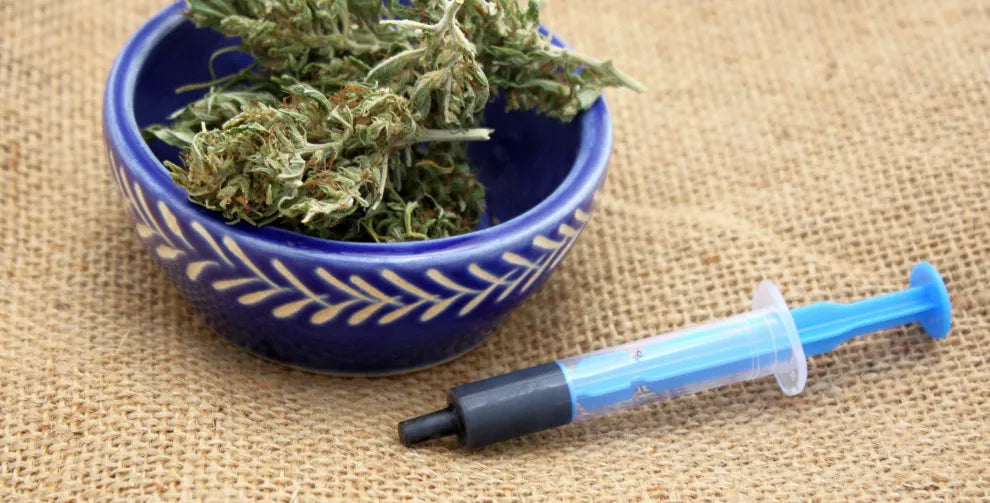
RSO, or Rick Simpson Oil, has earned a loyal following among people looking for strong, full-bodied support from the cannabis plant. It’s known for being rich in cannabinoids, particularly THC, and delivering the full spectrum of plant compounds in a very concentrated form.
However, what really sets RSO apart is how it interacts with the endocannabinoid system, which helps our bodies stay balanced.
So, let’s take a moment to explore what RSO is, how it works with your body, and why it might be worth your attention as part of your wellness journey.
What is RSO full spectrum?
RSO stands for Rick Simpson Oil, named after a Canadian man who created it in the early 2000s. It's a thick, sticky oil made from cannabis using a process that captures the entire spectrum of cannabinoids, terpenes, flavonoids, and other beneficial compounds found in the plant.
What does “spectrum” mean for cannabis?
When we're talking about traditional cannabis or hemp, the spectrum refers to the amount of naturally occurring plant compounds included in a wellness product. Plant extract will naturally contain everything the plant contains unless it's been modified to remove specific parts.
Full spectrum extracts or oils will contain:
- THC (tetrahydrocannabinol): The compound best known for its euphoric effects.
- CBD (cannabidiol): Known for supporting calm, emotional balance, and recovery.*
- CBN, CBG, CBC: Lesser known cannabinoids that each bring unique properties.
- Terpenes: Aromatic oils that may also contribute to wellness support.
- Flavonoids: Plant compounds with antioxidant properties.
Broad spectrum products contain everything except for the THC. Isolate products contain only one specially selected cannabinoid, and any cannabinoid can be made into an isolate.
RSO is a full spectrum wellness product, meaning it contains everything that the plant contains. The difference between RSO and other full spectrum products comes from the type of plants used to make RSO.
How is RSO full spectrum different from other full spectrum products?
Full spectrum products can be made from hemp (like Sunmed premium CBD products) or cannabis. The difference between hemp and traditional cannabis is the THC content. Hemp plants are those containing a maximum of 0.3% THC by dry weight, which means that a full spectrum hemp product will almost always contain less THC than a full spectrum product made from traditional cannabis.
Cannabis plants have very different THC percentages based on the strain (or variety) of the plant. Every strain has a unique balance of cannabinoids and terpenes, with some plants containing more than 30% THC.
Rick Simpson Oil is intended to prioritize THC content, which means it's usually only made from high-THC varieties of cannabis. It's a full spectrum product, but the ratio of THC to other cannabinoids is very stark. THC has profound effects that increase in intensity with the amount that you use. This means that RSO is one of the strongest THC delivery methods available.
What is the endocannabinoid system?
To truly understand how RSO interacts with the body, we need to discuss the endocannabinoid system (ECS). The ECS is like the body's internal balancing system. It constantly works behind the scenes to support mood, focus, circadian rhythm, appetite, and comfort levels.
It does all of this through a network of receptors, messengers, and enzymes. Think of it like a communication system. The body sends messages in the form of endocannabinoids (which are like naturally produced versions of the compounds found in cannabis), and cannabinoid receptors receive these messages.
There are two main types of receptors:
- CB1 receptors, which are mostly found in the brain and central nervous system.
- CB2 receptors, which are found more in the immune system and throughout the body.
Cannabinoids interact with different receptors in different ways, and their effects may work to shape the way you feel. Some cannabinoids (like THC) bind to your receptors and may change the way they send or receive messages. Some cannabinoids (like CBD) stimulate your receptors without binding to them, which can encourage receptors to fulfill their natural functions without changing the way they work.
How does RSO interact with the endocannabinoid system?
RSO delivers the full spectrum of cannabinoids, including a concentrated amount of THC. This wealth of THC is what sets RSO apart from other full spectrum products.
Unlike CBD, which doesn’t directly bind to receptors, THC binds strongly to CB1 receptors. That’s what causes the euphoric feeling some people associate with cannabis.
When large amounts of THC bind to your CB1 receptors, it can dramatically change communication throughout your brain and body. Depending on how your body is feeling, that response might include encouraging deeper relaxation, reducing the severity of physical sensations, and making you feel very sleepy.
At the same time, the other cannabinoids and compounds in RSO are working alongside THC, helping shape and moderate the experience. One of the primary reasons people enjoy full spectrum products is the way that THC and CBD interact with each other.
CBD can prevent excessive amounts of THC from binding to your receptors, and when the two coexist in a meaningful ratio, they can balance each other out. This balancing effect is far less noticeable in full spectrum products like RSO because the naturally occurring CBD is very negligible when compared to the amount of THC the product contains.
How do people use RSO in a wellness routine?
Because RSO is so concentrated, a little goes a long way. Most people, even people experienced with THC, will start with a very small serving size. There is no official recommendation, but the community tends to agree that 0.03 ml (about the size of a grain of rice) is generally all a first-timer needs to feel the effects.
Most people use RSO around bedtime. The oil's potency makes it unsafe to use before driving or completing most daily tasks, so it's best to use it when you know you won't need to leave the house or do anything complicated (like cooking a meal or washing the dishes).
The primary draw of RSO is its ability to dull sensations of intense physical discomfort. Some people use RSO specifically to mitigate discomfort that prevents them from resting or sleeping. RSO is sometimes used as a recovery supplement because of its potential to make difficult situations more bearable.
Is RSO right for everyone?
Because RSO is high in THC, it does produce an intoxicating effect. The effects aren't always overwhelming, especially when RSO is used in minimal amounts. Some people are specifically seeking intense psychoactive effects, and RSO is one of the easiest ways to achieve these effects.
The potency of Rick Simpson Oil makes it easy to accidentally overindulge, and if you're feeling uneasy about portion control of very tiny servings, RSO may not be right for you.
Start very low and go slow. Everyone’s endocannabinoid system is different, especially when people have different levels of experience using wellness products containing THC.
Make sure you’re in a comfortable space, especially when trying it for the first time. Plan to be in for the day. It may be a good idea to complete your bedtime routine a little early and get your pajamas on before you use RSO for the first time. The strong effects may make you sleepy, and it's wise to be ready to call it a night early if you experience heavy drowsiness.
If you’re looking for something that won’t affect perception at all, a high CBD product, a broad spectrum formula (with no THC), or a hemp-derived wellness product may be a better option for you. Eliminating THC or using very low concentrations of THC can prevent an overwhelming experience.
RSO full spectrum vs. CBD full spectrum: How do they compare?
RSO full spectrum and CBD full spectrum are both full spectrum products, but they’re not the same. If you’re exploring which one is right for your lifestyle, it helps to know how they work in different ways.
Let’s look at how CBD full spectrum and RSO full spectrum compare when it comes to everyday wellness, restful sleep, and staying energized and clear.
For holistic support
CBD full spectrum is often a go-to choice if you’re looking to support your body in a gentle, steady way. It contains a wide range of cannabinoids, terpenes, and other beneficial plant compounds, but it’s low in THC. That means you can take it during the day and still feel grounded and clear.*
Many people use it as part of a daily wellness routine to help bring their nervous system, mood, and energy back into balance.
RSO full spectrum, on the other hand, is much more concentrated and contains high levels of THC. It’s often used in very small amounts and may create a shift in awareness or sensation.
Some people find that this stronger effect helps them connect more deeply to their body or find soothing support when they’re feeling worn down. It’s not typically used for daily daytime support, but it can be powerful when used intentionally.
For sleep support
If sleep has been feeling a little out of reach, both CBD full spectrum and RSO full spectrum may help you ease into rest. They can provide support in very different ways.
CBD full spectrum is often used in the evening to support a smooth transition into relaxation. It doesn’t make you feel drowsy, but it may help quiet the mind, ease body tension, and make it easier to unwind naturally.* CBD for sleep is popular among people seeking gentle support with no lingering drowsiness.
RSO full spectrum, because of its higher THC content, may bring on a more noticeable sense of calm. It’s often described as deeply grounding and heavy. For some people, this makes it ideal for winding down at the end of a long day or finding stillness before sleep.
For energy and focus support
This is where full spectrum CBD really shines. Because it doesn’t cause intoxication, it’s perfect for helping you stay balanced and focused throughout the day. Some people find that CBD for focus helps smooth out their general mood, ease racing thoughts, and keep their energy steady without the jittery feeling that can come with caffeine.*
RSO full spectrum, on the other hand, is not usually used for daytime focus. Its stronger effects may create a dreamy or slower pace, which is better suited for winding down rather than powering through your to-do list.
The bottom line
RSO full spectrum can be a powerful tool for people seeking profound effects, especially if they’re comfortable with the idea of using significant amounts of THC. The majority of people who are interested in incorporating cannabinoids into their wellness routine are likely to find that RSO is a bit excessive for their daily needs.
If you’re interested in experiencing profound elevating effects, RSO can deliver. Just be sure to be conservative with your serving size if you have limited experience with THC. If you’re more interested in cannabinoids for daily holistic support, CBD is most likely a better option for you.
Shop Sunmed for wellness products designed to support you throughout the day. Our full spectrum CBD products are premium quality and perfectly balanced for daily support.
*This statement has not been evaluated by the Food & Drug Administration. This product is not intended to diagnose, treat, cure, or prevent any disease.
Sources:
THC Content on a Dry Weight Basis: Implications for Hemp Legality | National Library of Medicine
Molecular and Cellular Mechanisms of Action of Cannabidiol | National Library of Medicine
